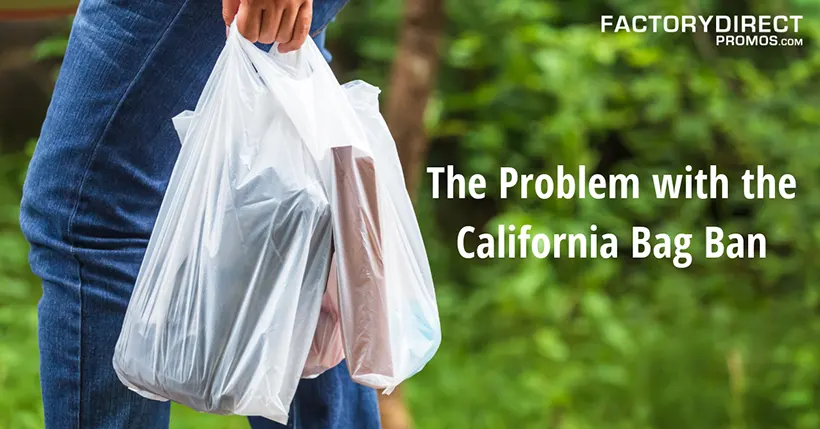How the California Bag Ban Failed

California has long been a leader in the plastic bag ban movement. While the Golden State intended to eliminate single-use plastic when it passed a state-wide ban in 2014, things played out differently. Learn more about the California bag ban, what went wrong, and what officials are doing to fix the issue.
History of the Bag Ban in California
Before the state-wide bag ban, 100 cities, counties, and municipalities across California had implemented plastic bag bans or fees. In 2014, State Senate Bill No. 270, which banned disposable bags, was signed into law. Industry groups pushed back, and the matter went on the ballot. Voters approved the state-wide bag ban in November 2016, and the ban became effective.
Unintended Consequences
The ban was initially passed with the intention that any plastic bags used would be recycled, but soon after the ban became effective, retailers offered thicker plastic bags for 10 cents. These bags were intended to be reusable, but few shoppers reused these bags. Moreover, despite these thicker plastic bags being labeled recyclable, few were actually recycled. Research has shown that even when consumers try to recycle disposable plastic bags, only 22% of those bags will reach a recycling facility.
Concerns about the safety of reusable bags during the COVID-19 pandemic further compounded the entire issue. More consumers left their reusable shopping bags at home in favor of the thicker plastic bags available at the checkout. These thicker bags were treated as disposable bags.
In 2023, more plastic bags by weight were thrown away in California than when the statewide bag ban was passed. “We didn’t worry about the carve-out for these thicker bags in the early days,” said Mark Murray, director of the advocacy group Californians Against Waste. “It just didn’t seem like they were going to be the thing that they ultimately became.”
The Future of Single-Use Plastic Bags in California
New efforts are underway to ban all plastic bags at California checkouts and eliminate this loophole. Paper bags will still be available under the new proposal. If California’s new plastic bag bill is passed, it won’t be effective until 2026. In the meantime, plastic manufacturers are working to utilize recycled plastic better. However, significant improvements to the recycling structure are necessary for this to work.
Further Efforts
California has made other efforts to help consumers better understand the environmental impact of plastic. As part of the truth-in-advertising law passed in 2021, companies cannot use the recycling symbol on products unless there is evidence that the material is recycled in most California communities.
Lasting Impact
What happened in California is a common issue. Other states have learned from California’s plastic bag ban. States like New York have imposed more strict measures regarding the availability of thicker plastic bags at the checkout to avoid the influx of thicker bags in favor of bags that really are reusable.
